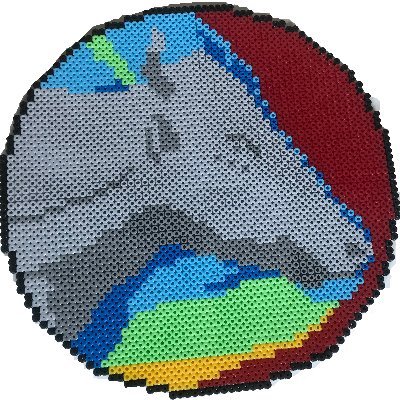
Kristoffer Aalstad
@krisaalstad
Followers
153
Following
3K
Media
9
Statuses
657
Researcher @unioslo_mn. Working on snow, permafrost, meteorology, data assimilation, and remote sensing.
Norwayish
Joined March 2018
New #OpenAccess paper in GRL @theAGU led by the indomitable Norbert Pirk @norbert_nateko @spoton_fluxes using deep ensemble neural networks to disentangle permafrost carbon fluxes @CbaOslo @unioslo_mn @NIVAforskning @UCPH_Research @NORCEresearch @NTNU
agupubs.onlinelibrary.wiley.com
Eddy covariance fluxes are disaggregated for different surfaces using Bayesian neural networks to derive uncertainty-aware carbon balances While palsa areas have a near-zero annual methane balanc...
1
0
3
Discussion open for comments on @EgUsphere: Inferring methane emissions from African livestock by fusing drone, tower, and satellite data
0
1
3
New preprint in @EgUsphere led by trailblazing PhD candidate Marco Mazzolini on joint ICESat-2 #spacelaser snow depth and Sentinel-2 snow cover data assimilation with MuSA in the SNOWDEPTH @forskningsradet project @UiO_ResearchMN @NASA_ICE @CopernicusEU
0
1
6
@theAGU @norbert_nateko @spoton_fluxes @CbaOslo @NIVAforskning @UCPH_Research @NORCEresearch @NTNU @numpy_team Although the idea of Bayesian neural networks and training them with ensemble Kalman (or other MC) methods is not new, it is a promising way to conduct probabilistic machine learning (see the great books by @sirbayes) with uncertainty quantification that we need in (geo)science
0
0
1
@theAGU @norbert_nateko @spoton_fluxes @CbaOslo @NIVAforskning @UCPH_Research @NORCEresearch @NTNU The "deep ensemble" neural network was trained without backpropagation using ensemble Kalman techniques from geophysical data assimilation to perform (approximate) Bayesian inference of network parameters implemented in pure @numpy_team code here
github.com
Contribute to norberp/deep_ensemble_flux_inference development by creating an account on GitHub.
1
0
0
@theAGU @norbert_nateko @spoton_fluxes @CbaOslo @NIVAforskning @UCPH_Research @NORCEresearch @NTNU This was enabled by probabilistic machine learning by 1) Treating the network weights and biases as random variables and 2) Using a tailored network architecture with an aggregating likelihood induced by incorporating footprint weights in two output layers
1
0
0
@theAGU @norbert_nateko @spoton_fluxes @CbaOslo @NIVAforskning @UCPH_Research @NORCEresearch @NTNU The headline result is that by combining a "deep ensemble" with a dynamic footprint model we are able to infer gap-free carbon dioxide and methane flux with uncertainty quantification from several surfaces (ponds, palsa, fen) from footprint-averaged eddy covariance data [Fig. 3]
1
0
0
Disaggregating the Carbon Exchange of Degrading Permafrost Peatlands Using Bayesian Deep Learning
agupubs.onlinelibrary.wiley.com
Eddy covariance fluxes are disaggregated for different surfaces using Bayesian neural networks to derive uncertainty-aware carbon balances While palsa areas have a near-zero annual methane balanc...
0
2
3
Disaggregating the Carbon Exchange of Degrading Permafrost Peatlands Using Bayesian Deep Learning - Pirk - 2024 - Geophysical Research Letters - Wiley Online Library
agupubs.onlinelibrary.wiley.com
Eddy covariance fluxes are disaggregated for different surfaces using Bayesian neural networks to derive uncertainty-aware carbon balances While palsa areas have a near-zero annual methane balanc...
0
2
3
Stanley's probability textbook ( https://t.co/QKOfdjV9jW) is fantastic, so I imagine this tutorial on diffusion is good as well. However, I am no longer of a fan of presenting the discrete time version - the flow matching interpretation seems more elegant.
I wrote a tutorial on diffusion models for undergrad and grad students. I tried my best to give intuitive explanations for complicated equations. Your feedback is much appreciated Thanks to those who suggested various reading materials to me https://t.co/fWv111nG5M
3
99
619
this week, i will tweet some textbook recommendations. for the books which i include, the basic criteria are that: 1) if i had found them earlier, i would have understood certain topics more quickly 2) they contributed to me liking the subject 3) i still enjoy reading them
6
18
223
The SPOT satellites archive remains largely untapped. In this paper we show how to train a deep learning model to classify snow and clouds without reference data.. by emulating SPOT data from Sentinel-2 images. Unofficial name of the method: SPOTIFY. https://t.co/cXumvDgGnA
4
14
68
To all who like this - what if I told you this book is not about the linear deterministic kind of SSM used by Mamba, S4, etc. but instead is about Bayesian inference in stochastic nonlinear dynamical models - would you still be interested?
State Space Models: A Modern Approach This is an interactive textbook on state space models (SSM) using the JAX Python library. https://t.co/GZSaypO2o6
22
37
526
By combining model development and observations from the @NWONieuws #SLOCS project and the @RuisdaelObserv, we created a cloud-resolving simulation with #MicroHH of The Netherlands with realistic boundary conditions derived from @ECMWF ERA5. Movie by @bartvstratum. @WUR.
4
9
49
Working on data assimilation and inverse modeling for the terrestrial cryosphere? Consider applying to our EGU session @EuroGeosciences (deadline tomorrow!)
0
0
6
Do you want to know what the snow conditions in Norway are forecast to be like in the coming months? Our downscaling of ECMWF forecasts are now live on the Arctic Portal: https://t.co/ph5AU6mRJS 6-month forecasts of snow depth and temperature will be updated every month.
0
2
6















